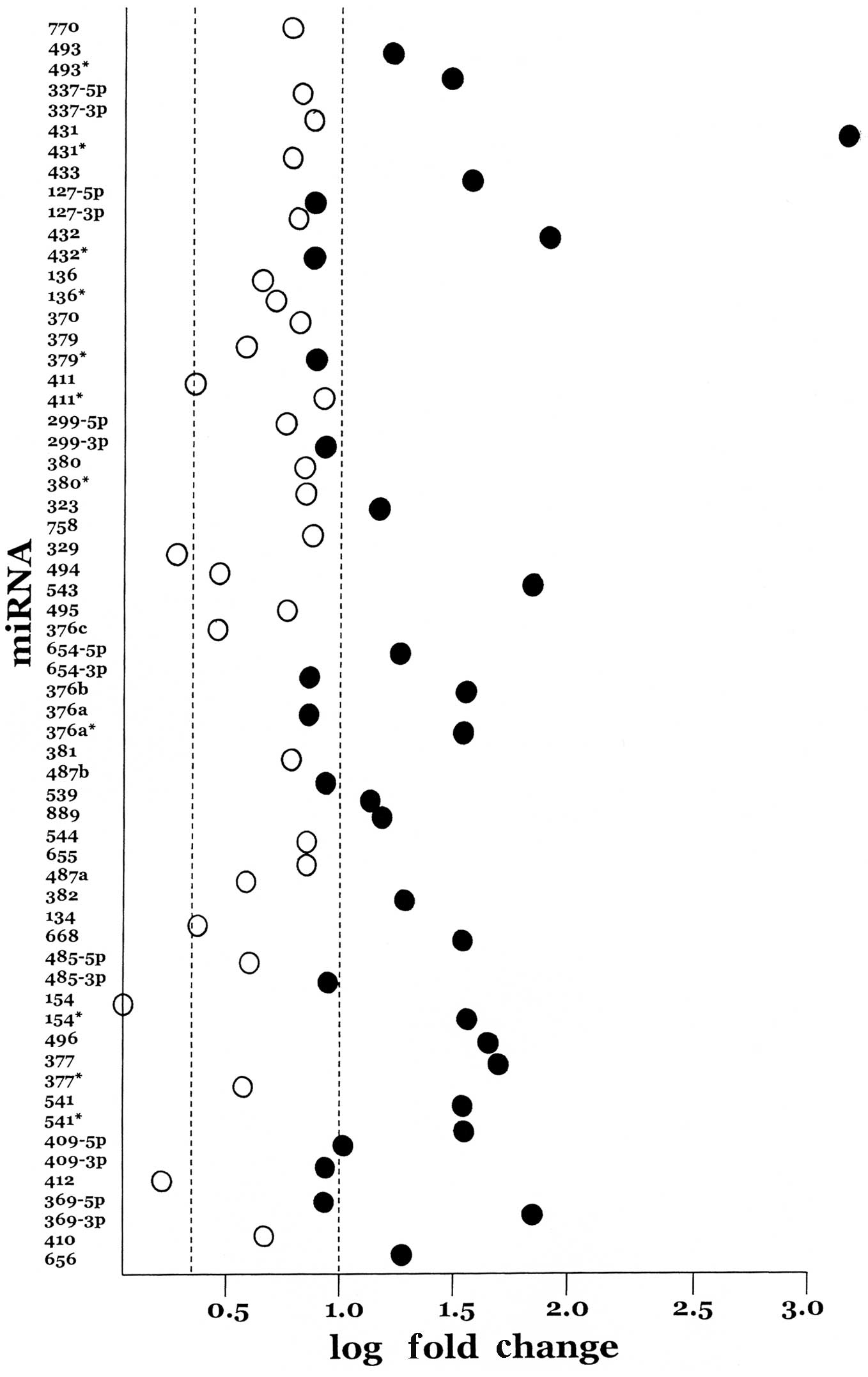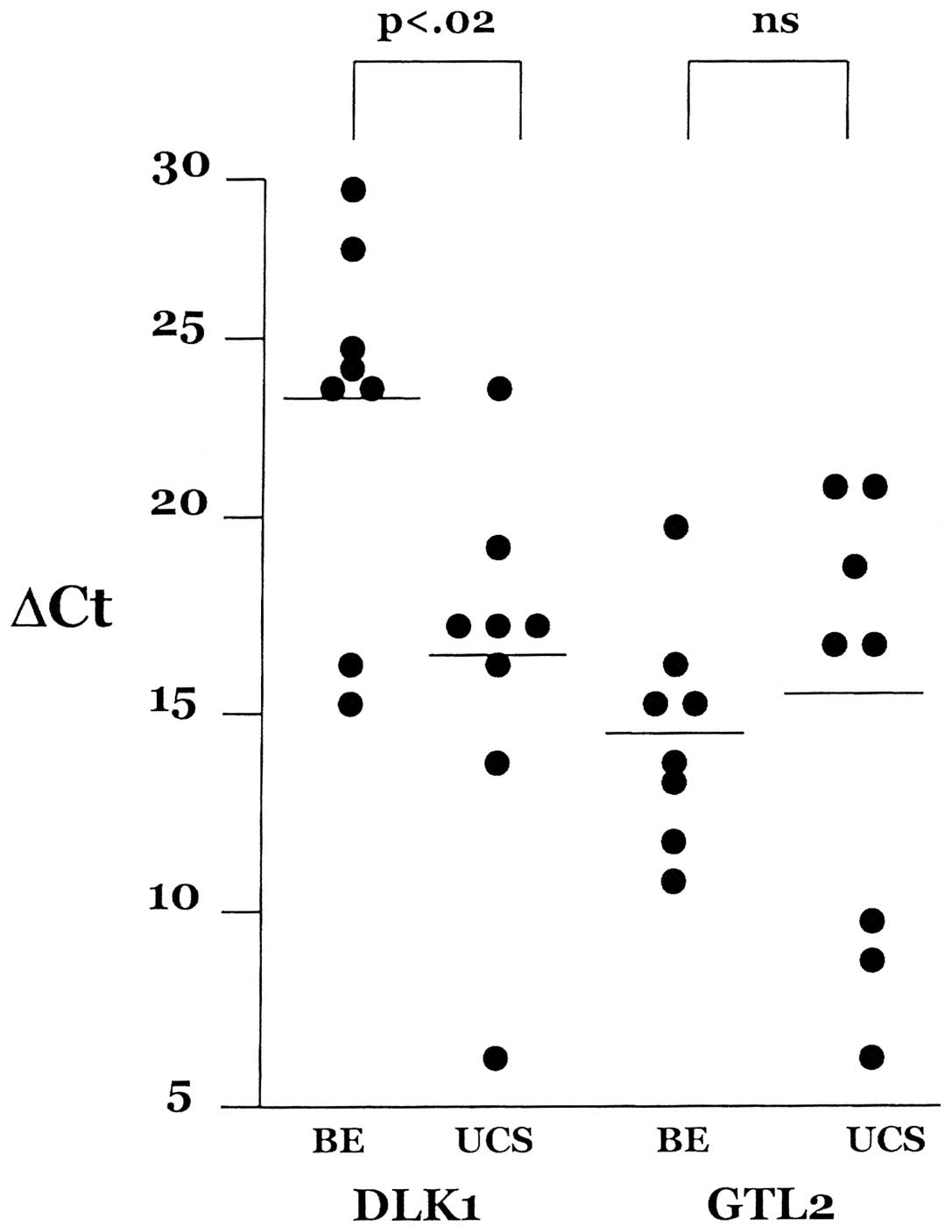|
1.
|
D'Angelo E and Prat J: Uterine sarcomas: A
review. Gynecol Oncol. 116:131–139. 2010.
|
|
2.
|
Evans HL, Chawla SP, Simpson C and Finn
KP: Smooth muscle neoplasms of the uterus other than ordinary
leiomyoma. A study of 46 cases with emphasis on diagnostic criteria
and prognostic factors. Cancer. 62:2239–2247. 1988. View Article : Google Scholar : PubMed/NCBI
|
|
3.
|
Kernochan LE and Garcia RL:
Carcinosarcomas (malignant mixed Müllerian tumor) of the uterus:
Advances in elucidation of biologic and clinical characteristics. J
Natl Compr Canc Netw. 7:550–557. 2009.
|
|
4.
|
Zelmanowicz A, Hildesheim A, Sherman ME,
et al: Evidence for a common etiology for endometrial carcinomas
and malignant mixed mullerian tumors. Gynecol Oncol. 69:253–257.
1998. View Article : Google Scholar : PubMed/NCBI
|
|
5.
|
Silverberg SG, Major FJ, Blessing JA, et
al: Carcinosarcoma (malignant mixed mesodermal tumor) of the
uterus. A Gynecologic Oncology Group pathologic study of 203 cases.
Int J Gynecol Pathol. 9:1–19. 1990. View Article : Google Scholar
|
|
6.
|
Sreenan JJ and Hart WR: A pathologic study
of 29 metastatic tumors: Further evidence for the dominant role of
the epithelial component and the conversion theory of histogenesis.
Am J Surg Pathol. 19:666–674. 1995. View Article : Google Scholar : PubMed/NCBI
|
|
7.
|
Jin Z, Ogata S, Tamura G, et al:
Carcinosarcomas (malignant mullerian mixed tumors) of the uterus
and ovary: A genetic study with special reference to histogenesis.
Int J Gynecol Pathol. 22:368–373. 2003. View Article : Google Scholar : PubMed/NCBI
|
|
8.
|
Wada H, Enomoto T, Fujita M, et al:
Molecular evidence that most but not all carcinosarcomas of the
uterus are combination tumors. Cancer Res. 57:5379–5385.
1997.PubMed/NCBI
|
|
9.
|
Abeln EC, Smit VT, Wessels JW, et al:
Molecular genetic evidence for the conversion hypothesis of the
origin of malignant mixed Müllerian tumors. J Pathol. 183:424–431.
1997.PubMed/NCBI
|
|
10.
|
Fujii H, Yoshida M, Gong ZX, et al:
Frequent genetic heterogeneity in the clonal evolution of
gynecological carcinosarcoma and its influence on phenotypic
diversity. Cancer Res. 60:114–120. 2000.PubMed/NCBI
|
|
11.
|
Taylor NP, Zighelboim I, Huettner PC, et
al: DNA mismatch repair and TP53 defects are early events in
uterine carcinosarcoma tumorigenesis. Mod Pathol. 19:1333–1338.
2006. View Article : Google Scholar : PubMed/NCBI
|
|
12.
|
Melo SA and Esteller M: Dysregulation of
microRNAs in cancer: Playing with fire. FEBS Lett. 585:2087–2099.
2011. View Article : Google Scholar : PubMed/NCBI
|
|
13.
|
Rovira C, Güida MC and Cayota A: MicroRNAs
and other small silencing RNAs in cancer. IUBMB Life. 62:859–868.
2010. View
Article : Google Scholar : PubMed/NCBI
|
|
14.
|
Kircher M, Bock C and Paulsen M:
Structural conservation versus functional divergence of maternally
expressed microRNAs in the Dlk1/Gtl2 imprinting region. BMC
Genomics. 9:3462008. View Article : Google Scholar : PubMed/NCBI
|
|
15.
|
Guens E, De Temmerman N, Hilven P, et al:
Methylation analysis of the intergenic differentially methylated
region of DLK1-GTL2 in human. Eur J Hum Genet. 15:352–361. 2007.
View Article : Google Scholar : PubMed/NCBI
|
|
16.
|
Livak KJ and Schmittgen TD: Analysis of
relative gene expression data using real-time quantitative PCR and
the 2(-delta delta C(T)) method. Methods. 25:402–408. 2001.
View Article : Google Scholar : PubMed/NCBI
|
|
17.
|
Guo W, Sarkar SK and Peddada SD:
Controlling false discoveries in multidimensional directional
decisions, with applications to gene expression data on ordered
categories. Biometrics. 66:485–492. 2010. View Article : Google Scholar : PubMed/NCBI
|
|
18.
|
Devor EJ, Hovey AM, Goodheart MJ,
Ramachandran S and Leslie KK: microRNA expression profiling of
endometrial endometrioid adenocarcinomas and serous adenocarcinomas
reveals profiles containing shared, unique and differentiating
groups of microRNAs. Oncol Rep. 26:995–1002. 2011.
|
|
19.
|
Ratner ES, Tuck D, Richter C, et al:
MicroRNA signatures differentiate uterine cancer tumor subtypes.
Gynecol Oncol. 118:251–257. 2010. View Article : Google Scholar : PubMed/NCBI
|
|
20.
|
Castilla MA, Moreno-Bueno G, Romero-Perez
L, et al: Micro-RNA signature of the epithelial-mesenchymal
transition in endometrial carcinosarcoma. J Pathol. 223:72–80.
2011. View Article : Google Scholar : PubMed/NCBI
|
|
21.
|
Sengupta S, den Boon JA, Chen IH, et al:
MicroRNA 29c is down-regulated in nasalpharyngeal carcinomas,
up-regulating mRNAs encoding extracellular matrix proteins. Proc
Natl Acad Sci USA. 105:5874–5878. 2008. View Article : Google Scholar : PubMed/NCBI
|
|
22.
|
Salvi A, Sabelli C, Moncini S, et al:
MicroRNA-23b mediates urokinase and c-met downmodulation and a
decreased migration of human hepatocellular carcinoma cells. FEBS
J. 276:2966–2982. 2009. View Article : Google Scholar : PubMed/NCBI
|
|
23.
|
Cochrane DR, Spoelstra NS, Howe EN,
Nordeen SK and Richer JK: MicroRNA-200c mitigates invasiveness and
restores sensitivity to microtubule-targeting chemotherapeutic
agents. Mol Cancer Ther. 8:1055–1066. 2009. View Article : Google Scholar : PubMed/NCBI
|
|
24.
|
Gregory P, Bert A, Paterson E, et al: The
miR-200 family and miR-205 regulate epithelial to mesenchymal
transition by targeting ZEB1 and SIP1. Nat Cell Biol. 10:593–601.
2008. View
Article : Google Scholar : PubMed/NCBI
|
|
25.
|
Vrba L, Jensen TJ and Garbe JC: Role for
DNA methylation in the regulation of miR-200c and miR-141
expression in normal and cancer cells. PLoS ONE. 5:e86972010.
View Article : Google Scholar : PubMed/NCBI
|
|
26.
|
Dixon-McIver A, East P, Mein CA, et al:
Distinctive patterns of microRNA expression associated with
karyotype in acute myeloid leulaemia. PLoS ONE. 3:e21412008.
View Article : Google Scholar : PubMed/NCBI
|
|
27.
|
Haller F, von Heydebreck A, Zhang JD, et
al: Localization- and mutation-dependent microRNA (miRNA)
expression signatures in gastrointestinal stromal tumours (GISTs),
with a cluster of co-expressed miRNAs located at 14q32.31. J
Pathol. 220:71–86. 2010. View Article : Google Scholar
|
|
28.
|
Micci F, Tiexeira MR, Haugom L, Abeler VM
and Heim S: Genomic aberrations in carcinomas of the uterine
corpus. Genes Chrom Cancer. 40:229–246. 2004. View Article : Google Scholar : PubMed/NCBI
|
|
29.
|
Salvesen HB, Carter SL, Mannelqvist M, et
al: Integrated genomic profiling of endometrial carcinoma
associates aggressive tumors with indicators of PI3 kinase
activation. Proc Natl Acad Sci USA. 106:4834–4839. 2009. View Article : Google Scholar : PubMed/NCBI
|
|
30.
|
Seitz H, Royo H, Bortolin M-L, et al: A
large imprinted microRNA gene cluster at the mouse Dlk1-Gtl2
domain. Genome Res. 14:1741–1748. 2004. View Article : Google Scholar : PubMed/NCBI
|
|
31.
|
Sánchez-Solana B, Nueda ML, Ruvira MD, et
al: The EGF-like proteins DLK1 and DLK2 function as inhibitory
non-canonical ligands of NOTCH1 receptor that modulate each other's
activities. Biochim Biophys Acta. 1813:1153–1164. 2011.PubMed/NCBI
|












